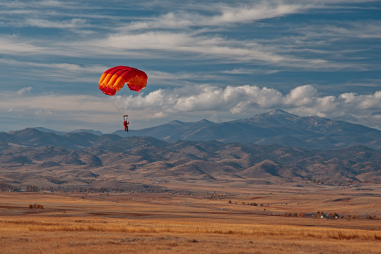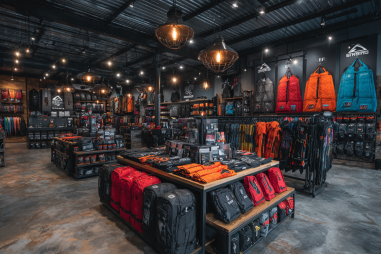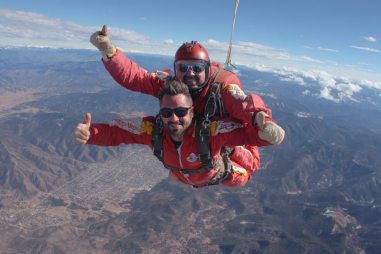Properly packing your skydiving gear is one of the most critical steps to ensuring a safe and enjoyable jump. The way your parachute is folded and stored can directly impact its deployment and performance, making it essential to master expert packing techniques. Whether you’re new to skydiving or a seasoned enthusiast, understanding the importance of correct packing, along with the right tools and methods, will help preserve your equipment’s integrity and optimize your jump experience.
Importance of Correct Parachute Packing
Packing a parachute correctly is vital for a successful skydive. The parachute’s deployment depends entirely on how it is folded and stowed—if the lines are tangled or the canopy isn’t properly arranged, it could lead to a malfunction or delayed opening. In extreme cases, improper packing can compromise the safety of the jumper. Moreover, consistent and correct packing helps extend the life of the parachute fabric and lines by minimizing unnecessary wear and tear. Good packing habits also reinforce muscle memory, allowing skydivers to confidently prepare their gear before every jump.
Step-by-Step Guide to Packing Your Main Parachute
Packing the main parachute is a meticulous process that demands attention to detail. Here is a simplified step-by-step guide to help ensure your canopy is packed optimally:
- Inspect the parachute: Before packing, check the fabric for tears, inspect the lines for knots or damage, and examine the container and hardware.
- Lay the canopy flat: Find a clean, flat surface where you can spread out the parachute fully without wrinkles or creases.
- S-fold the lines: Neatly fold the suspension lines back and forth to prevent tangling during deployment.
- Fold the canopy: Fold the parachute canopy meticulously using accordion or flake folds, making sure the cells align correctly.
- Pack it into the container: Carefully place the folded canopy into the main container, ensuring it sits evenly and without excess tension.
- Close the deployment bag: Use the packing straps to secure the canopy and lines tightly in the deployment bag.
- Stow pilot chute and closing loops: Attach the pilot chute correctly per manufacturer guidelines, and make sure the closing loops and pins are properly set.
Following these steps consistently reduces the risk of line twists or parachute malfunctions during deployment.
How to Pack the Reserve Chute Properly
The reserve parachute is your last line of defense in case the main chute fails, so its packing requires even more precision. Reserve parachutes are usually packed by certified riggers, but it’s helpful for skydivers to know the process:
- Conduct thorough inspections: Due to its critical nature, inspect the reserve canopy, pilot chute, and container carefully for any damage or wear.
- Use manufacturer instructions strictly: Reserve chutes must be packed according to exact manufacturer specifications to comply with legal and safety standards.
- Apply precise folds: The reserve canopy is folded tightly to fit perfectly into the reserve container, following strict folding patterns to guarantee proper deployment.
- Ensure proper closing: The reserve closing loop must be secure but correctly tensioned for optimal function.
Given the critical role of the reserve parachute, most skydivers entrust packing to a qualified rigger who has the experience and certification to perform this vital task.
Use of Packing Tools and Aids
Packing tools can greatly improve the consistency and quality of your parachute packing. Here are some often-used aids:
- Line stow sheets: Help to keep lines aligned and prevent tangling during packing.
- Packing mats: Provide a clean and flat surface to lay out and fold the canopy.
- Rubber bands or strap rings: Used to bundle the canopy folds securely.
- Pin protectors: Protect the closing pins and loops from damage, ensuring secure closure.
- Tuning tools: Assist in adjusting container tension and line lengths.
Using the appropriate packing aids not only improves efficiency but also helps maintain equipment longevity by reducing unnecessary stress on the canopy and lines.
Common Packing Mistakes to Avoid
Even experienced skydivers may sometimes make packing errors that could lead to deployment issues. Watch out for these common mistakes:
- Twisted lines: Not properly S-folding the suspension lines can cause twists that prevent the canopy from deploying smoothly.
- Uneven packing: Folding the canopy unevenly can create pressures that disrupt the deployment sequence.
- Damaged or dirty equipment: Packing with wet, dirty, or damaged fabric can degrade the parachute’s performance.
- Incorrect pilot chute placement: Mispositioning the pilot chute can delay opening or cause entanglement.
- Loose or improperly secured closing loops: This can result in premature deployment or the container opening too early.
Being aware of and consciously avoiding these mistakes will significantly reduce risks associated with parachute malfunctions.
Storage Tips for Preserving Packed Gear
After packing, how you store your gear plays an important role in its longevity and performance. Consider these tips when storing packed parachutes:
- Keep gear dry and cool: Store your packed parachute in a moisture-free environment away from direct sunlight and extreme temperatures.
- Use protective covers: Containers and rigs should be protected with bags or covers to prevent dust and debris accumulation.
- Avoid heavy pressure: Do not place heavy objects on top of packed parachutes to prevent deformation of the canopy.
- Regular checks: Periodically inspect stored gear for signs of mold, mildew, or pest damage.
- Store horizontally or hang vertically: Avoid folding or cramming packed parachutes in tight spaces for prolonged periods.
Proper storage preserves the fabric integrity and packing quality, helping maintain the parachute’s readiness for your next jump.
When to Seek Professional Packing Assistance
While packing your main parachute is a valuable skill for any skydiver, certain situations call for professional help:
- Packing the reserve parachute: Must be done by licensed riggers due to strict safety regulations and sophisticated folding techniques.
- If you are unsure or inexperienced: Don’t hesitate to ask for assistance or training from certified packers to improve your skills.
- After damage or repairs: Have a professional review and repack the parachute after it’s been repaired or inspected.
- Legal inspections and repacks: Periodic repacking by a professional rigger is often legally mandated to ensure equipment safety.
Seeking professional assistance ensures compliance with safety standards and expert evaluation, minimizing the risk of malfunctions.
Legal Requirements Related to Gear Packing
Skydiving gear is subject to regulations aimed at protecting the jumper’s safety. Some important legal considerations include:
- Certified riggers must pack reserves: Most aviation authorities require the reserve parachute to be packed by a certified parachute rigger.
- Regular inspection intervals: Parachutes must be inspected and repacked at specific intervals (typically every 180 days) to remain legally airworthy.
- Proper documentation: Keep detailed records of packing dates, inspections, and repairs as a compliance measure.
- Compliance with manufacturer standards: Following packing instructions and safety standards set by the canopy manufacturer is legally mandated.
Adhering to these requirements not only ensures personal safety but also maintains legal eligibility to jump.
Mastering Packing for Safety and Performance
Mastering skydiving gear packing techniques is essential for every skydiver who wants to combine safety with optimum performance. Taking the time to learn and practice proper packing methods, using the right tools, avoiding common mistakes, and respecting legal requirements will result in smoother parachute deployments and a more enjoyable experience overall. Remember that practicing good packing habits contributes to preserving your equipment’s longevity while giving you the confidence to make every jump safely. Whether you pack your main parachute yourself or rely on a certified professional for the reserve, your vigilance and attention to detail can make all the difference in the sky.







